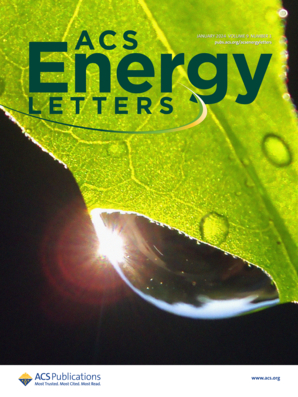Electrochemical Li Recovery from Spent LiFePO4-Based Li-Ion Batteries
IF 19.3
1区 材料科学
Q1 CHEMISTRY, PHYSICAL
引用次数: 0
Abstract
The increase in electric vehicles (EVs) powered by lithium-ion batteries (LIBs) will generate a massive number of spent LIBs in the future. LiFePO4 has recently become the most desired cathode for LIBs in EVs because it is remarkably cheaper and safer than other cathodes. Recovering lithium from spent LiFePO4 batteries using conventional methods, however, may not be economically viable because there are no valuable metals to recover in LiFePO4 other than lithium. This study reports the invention of an electrochemical system, composed of a Li+-extraction cell and a Li+-recovery cell, which can recycle Li+ from spent LiFePO4-LIBs as Li3PO4, Li2CO3, or LiOH using simple and cost-effective procedures. While recovering Li+, these cells also regenerate the acid consumed for Li+ leaching, minimizing the chemicals needed and the waste generated, enabling sustainable and environmentally benign Li+ recycling. The choice of electrodes, operation principles, performance, and variation of the Li+-extraction/recovery cells are reported.

废旧lifepo4基锂离子电池的电化学锂回收
随着以锂离子电池(LIBs)为动力的电动汽车(ev)的增加,未来将产生大量的废锂电池。LiFePO4最近成为电动汽车中锂离子电池最理想的阴极,因为它比其他阴极便宜和安全得多。然而,使用传统方法从废LiFePO4电池中回收锂可能在经济上不可行,因为除了锂之外,LiFePO4中没有其他有价值的金属可以回收。本研究报告了一种由Li+萃取电池和Li+回收电池组成的电化学系统,该系统可以用简单且经济的方法从废LiFePO4-LIBs中回收Li+作为Li3PO4, Li2CO3或LiOH。在回收锂离子的同时,这些电池还可以再生用于锂离子浸出的酸,从而最大限度地减少所需的化学品和产生的废物,实现可持续和环保的锂离子回收。报道了锂离子提取/回收电池的电极选择、工作原理、性能和变化。
本文章由计算机程序翻译,如有差异,请以英文原文为准。
求助全文
约1分钟内获得全文
求助全文
来源期刊

ACS Energy Letters
Energy-Renewable Energy, Sustainability and the Environment
CiteScore
31.20
自引率
5.00%
发文量
469
审稿时长
1 months
期刊介绍:
ACS Energy Letters is a monthly journal that publishes papers reporting new scientific advances in energy research. The journal focuses on topics that are of interest to scientists working in the fundamental and applied sciences. Rapid publication is a central criterion for acceptance, and the journal is known for its quick publication times, with an average of 4-6 weeks from submission to web publication in As Soon As Publishable format.
ACS Energy Letters is ranked as the number one journal in the Web of Science Electrochemistry category. It also ranks within the top 10 journals for Physical Chemistry, Energy & Fuels, and Nanoscience & Nanotechnology.
The journal offers several types of articles, including Letters, Energy Express, Perspectives, Reviews, Editorials, Viewpoints and Energy Focus. Additionally, authors have the option to submit videos that summarize or support the information presented in a Perspective or Review article, which can be highlighted on the journal's website. ACS Energy Letters is abstracted and indexed in Chemical Abstracts Service/SciFinder, EBSCO-summon, PubMed, Web of Science, Scopus and Portico.
 求助内容:
求助内容: 应助结果提醒方式:
应助结果提醒方式:


